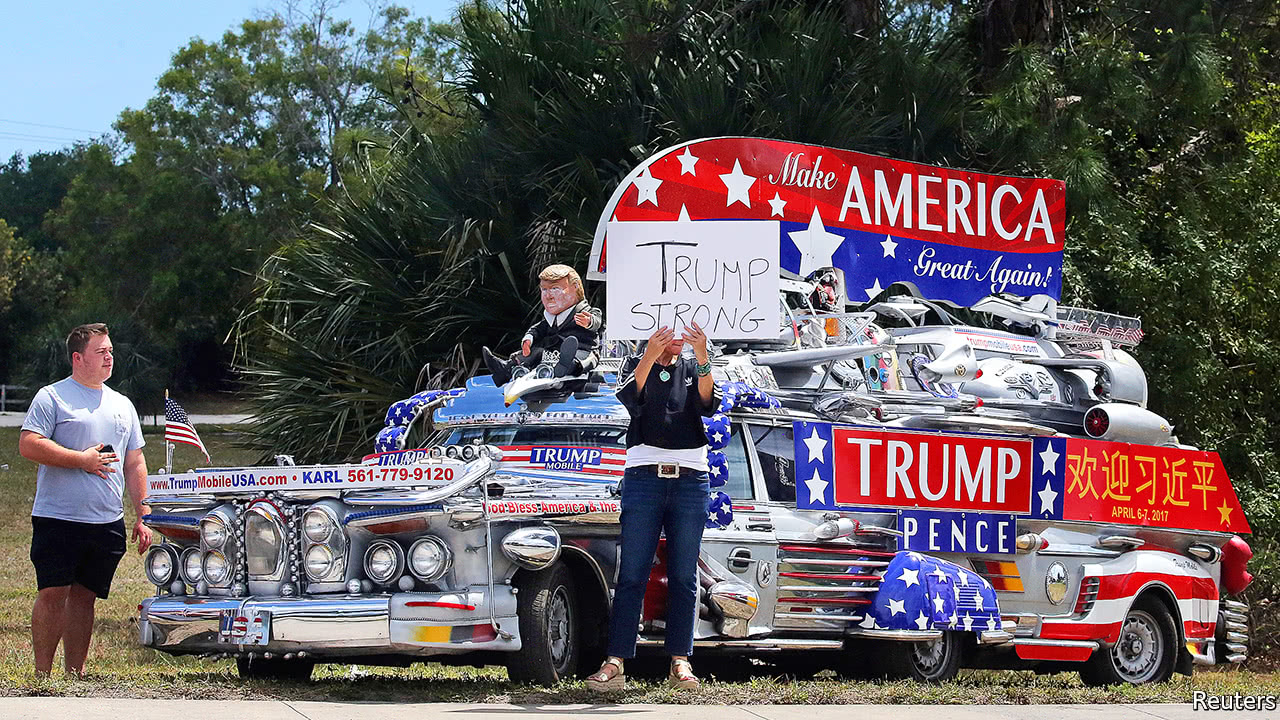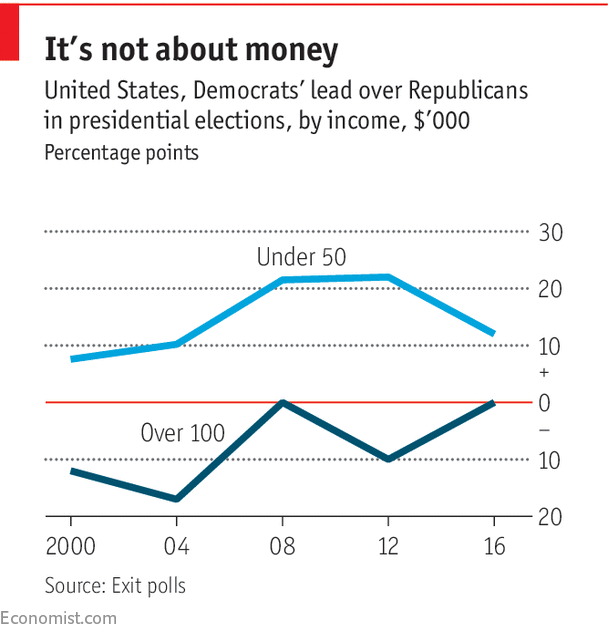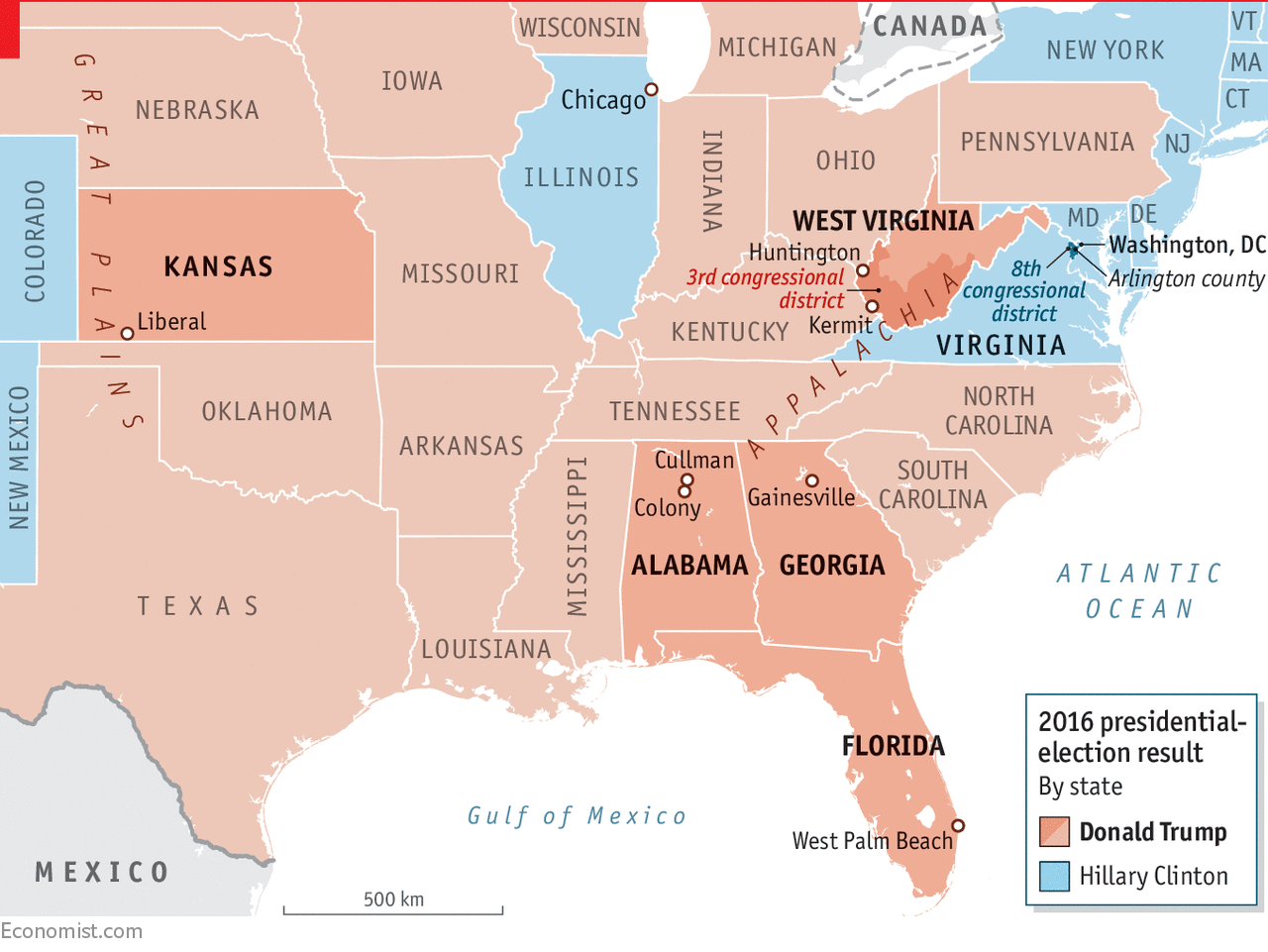
Observers of Donald Trump’s presidency who hope that politics will eventually return to normal will have a long wait, says John Prideaux
“IT’S A WONDERFUL day under President Trump! Please leave a message,” chirps the answerphone at the Palm Beach Republican Club, which sits on a palm-tree-lined avenue with a crossroads at one end and the turquoise Atlantic at the other. If Mar-a-Lago is Versailles, then this is its local village, whose inhabitants get occasional glimpses of the royal carriages. There is nothing downtrodden about the area. West Palm Beach, the nearest town, has a McLaren dealership and is patrolled by bicycle-mounted “Security Ambassadors”.
Palm Beach is about as different from rural Kansas as it is possible to be, yet the way the president’s supporters talk about him in both places is much the same: he’s a businessman, he’s trying to do the right thing, Congress is getting in his way, the media are painting him as a bad man which he’s not, and anyway the country was a disaster under Obama. In the time your correspondent spent in West Virginia, Kansas, Georgia, Alabama and Florida talking to mayors of small towns, local Republican Party bosses and ordinary folk who voted for the president, nobody spontaneously raised the lingering scandal over Russian meddling in the presidential election, and hardly anybody showed buyer’s remorse.
Go back 50 years, and if you knew someone’s income, you could predict, with reasonable accuracy, how they would vote. That is no longer true (see chart). From Florida’s golf courses to rural Appalachia, from Midwestern blue-collar suburbs to California’s bougainvillea-lined driveways, where some of the most prominent pro-Trump intellectuals grew up, the tribes that make up the president’s support are bound together by something powerful that has little to do with their economic fortunes.

To be fair, not everybody in America thinks it’s a wonderful day under President Trump. Plenty of people have watched the 45th president’s progress since his inauguration—from the “American carnage” speech to the firing of the FBI director, James Comey, from the courting of authoritarian leaders abroad to the
continuing mingling of business interests and power—and concluded that this president is a threat to the republic. This special report is not about them. Rather, it is about the roughly 40% or so of voters—some 50m Americans—who have lived through the same events and like what they see. According to Gallup, a polling organisation, that is the share who approved of the president a week after his inauguration. Five months into his administration, which has felt like a period of
extraordinary turbulence to those following events closely, Trump voters are less enthusiastic than they were, but that headline approval number has declined by only a couple of percentage points.Of this group, about half say they strongly support Mr Trump and are with the president no matter what. That is the share of voters, about 20%, who told YouGov, The Economist’s pollster, that it is a good idea for the president to appoint family members to positions in the White House, for example. Those who take him from a 20% approval rating to one closer to 40% are the ones he needs to stick by him. If you understand how they think about politics and what can change their minds, you can sketch the boundaries of the president’s support or, as his detractors might put it, what he can get away with.
The first thing to note is that most voters pay little attention. Those who follow politics tend to assume that everyone else does, too, but they are mistaken. According to the American National Election Study (ANES), a large survey run by Stanford and the University of Michigan and published in March, 94% of Trump voters did not attend a single political rally, speech or meeting last year. The figure for Clinton voters is 90%. The survey is considered the most rigorous study of what goes on in voters’ heads when they cast their ballot. (All the numbers on public opinion in what follows come from the ANES, unless otherwise stated.) Only about a fifth of Americans pay close attention to politics, and they tend to be the most committed conservatives or liberals. For the rest, political issues are little more than “a sideshow in the great circus of life”, wrote Robert Dahl, a political scientist, in 1961. That remains true. Americans do not trust government much and expect politicians to lie; 31% of Trump voters and 36% of Clinton voters think that the American government “probably” or
“definitely” knew about 9/11 in advance.
Wishful thinking
So
how do the vast majority of voters change their minds? Not by taking
each issue, deciding what is important to them, determining which
candidate is closer to their preferences and then voting accordingly. In
“Democracy for Realists”, the most influential recent book on voting,
Christopher Achen and Larry Bartels show that the opposite often
happens: people may well decide which candidate they like and then
ascribe policies they approve of to him or her, often incorrectly. Each
presidential-election year the ANES asks voters to place themselves on a
spectrum with “many more services” on the left to “reduce spending a
lot” on the right, and then to place the two main political parties
somewhere on that spectrum. About 15% decline, or say they have not
thought about it. The same number, more or less, will place themselves
but cannot place the parties, meaning that 30% of the electorate does
not have a good sense of where Republicans and Democrats stand on the
most fundamental question about the role of the state.
Of those who do answer, quite a few have a weak grasp of the parties’ governing philosophies. After the election, defeated Democrats spent some time fretting over the 80,000 votes they lost in Pennsylvania, Michigan and Wisconsin, handing Mr Trump a win in the electoral college. They wondered whether the FBI’s late intervention on Mrs Clinton’s e-mails swung the election. But a far larger number of voters did not really know what either party stood for. The ANES also asks voters whether the Republicans or Democrats are more conservative, and found that some 15% of Trump voters thought the Democrats were the more conservative party (as did 6% of Clinton voters). Add in the don’t knows, and 16% of Clinton voters and 24% of Trump voters were not sure which party was more conservative.
How is this possible in a country that is, as is often pointed out, highly polarised between conservatives and liberals? Only if a large number of people, rather than picking the party that best fits their own political views, are deciding on some other criteria—which is what they seem to be doing. Sometimes voters imagine that one of the parties fits their world view when it does not.
Sometimes they adapt their preferences in order to fit the candidate or party they like. This can happen even on issues that voters think of as non-negotiable. Abortion is one of those, particularly for women and Catholics, for some of whom this has the highest priority. Yet according to an analysis by Mssrs Achen and Bartels of a study in which the same voters were re-interviewed year after year, about half of men who were anti-abortion and voted Democrat in 1982 had become pro-choice Democrats 15 years later, changing their position to align it with their party’s thinking. A more recent flip comes from white evangelical voters, who supported candidate Trump by the same margin by which they supported George W. Bush, himself a white evangelical (see article).
This is not to pick on Trump voters or evangelicals: the same is true of Democrats, as the abortion example shows. Most voters make political choices based largely on what people like them are doing, and rarely change their minds. For example, it is hard to think of two more different candidates, in temperament, style and policy, than Mitt Romney and Donald Trump, yet more than 90% of those who voted for Mr Romney in the presidential election in 2012 also voted for Mr Trump this time, according to the ANES. The same share of Obama voters also backed Hillary Clinton. Those who expect Republican voters to desert Mr Trump each time a scandal breaks should bear this in mind.
Partisan reflexes often get blamed for whatever is currently going wrong in Washington. But partisanship works in part because it is such a helpful mental shortcut. Take the repeal of the Affordable Care Act, or Obamacare, by the House of Representatives, says Mr Bartels. Repealing the law is bound to have substantial effects on people’s lives, but measuring those effects against a
background of changing social conditions, health-insurance markets and medical technology would be tricky even for a health economist, let alone for a moderately well-informed voter. “So why not accept the judgment of people you trust?”
This kind of groupthink is so powerful that it shapes the way people see the world around them. Right after the election, and more than two months before Mr Trump took office, Republicans told pollsters that their personal finances were in much better shape than they had been the week before the ballot. Democrats said the opposite. The question had nothing to do with politics, and yet the answers given were somehow conditioned by the election. To understand how this can happen, compare and contrast two congressional districts: the one that is heading Republican fastest, and its Democratic counterpart. Conveniently, they are less than 200 miles apart.
Correction (July 4th 2017): A previous version of the map had New Mexico and Colorado coloured incorrectly. This has been changed.
@uptimistpeters

No comments:
Post a Comment